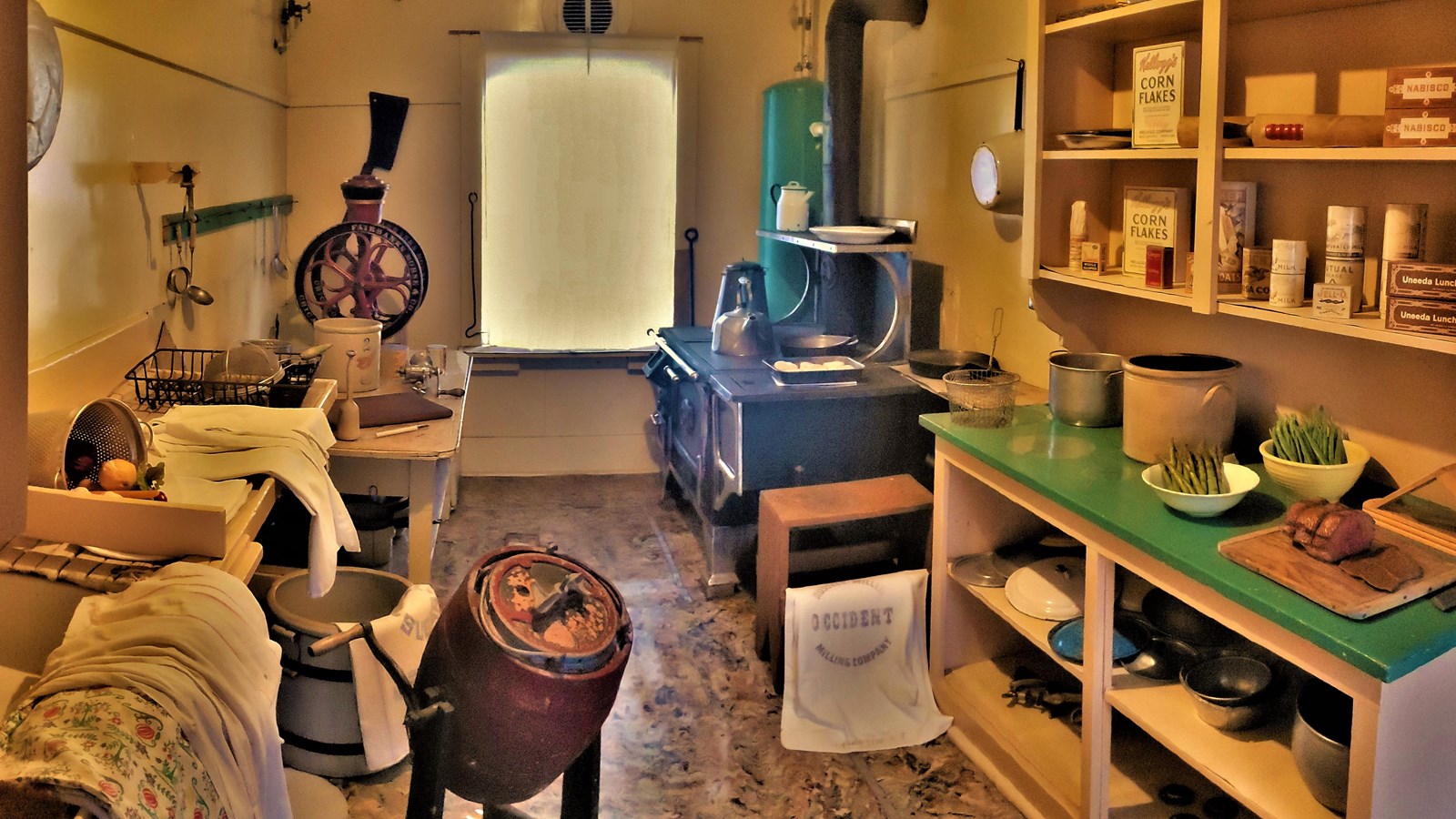Last updated: March 25, 2021
Place
Bunkhouse Kitchen

NPS/Grant-Kohrs Ranch
Quick Facts
Location:
Deer Lodge, MT
Significance:
Historical Structure
Designation:
National Historic Site
Amenities
6 listed
Accessible Sites, Cellular Signal, Historical/Interpretive Information/Exhibits, Information, Restroom - Seasonal, Trash/Litter Receptacles
The bunkhouse kitchen was added to the ranch sometime between 1884 and 1890, by Conrad Kohrs and John Bielenberg when they expanded the bunkhouse row to its current size from the original structure that Johnny Grant built in the 1860’s.
A variety of cooks worked in the bunkhouse kitchen over the years. They all had diverse personalities and came from much different backgrounds. Some were originally from as far away as Germany and China. Two of Conrad Kohrs nephews, John, and William Gehrmann remembered going into the bunkhouse kitchen when they visited the ranch and enjoyed the pies that were cooked by Sam, one of the Chinese cooks who worked for the ranch.
In 1932, Conrad Kohrs Warren, the grandson of Conrad Kohrs, became the manager of the ranch and renovated the entire bunkhouse row. During this remodel, some modern conveniences such as running water for the sink were added to the kitchen. Eventually a hot water tank was installed in the 1940s and in the early 1950s, an electric freezer was installed next door in the bunkhouse dining room to store food for the cook.
A large, metal gong hangs just outside the front door of the kitchen. This functioned like a dinner bell, with the cook hitting the gong to let the cowboys and ranch hands know that a hot meal was ready. To the right of the front door is a small garden where the cook could grow herbs to use in his recipes. Chives were found growing there during restoration work by the National Park Service in the late 1970s.
The meals that were prepared in the bunkhouse kitchen were hardy and filling. The items included sourdough biscuits, beef, beans, hotcake's, bacon and eggs for breakfast, and bannocks, a type of fried bread, along with the ever-present coffee which cowboys loved. Breakfast was ready for the cowboys and ranch hands after they looked to the horses and fed them first.
A variety of cooks worked in the bunkhouse kitchen over the years. They all had diverse personalities and came from much different backgrounds. Some were originally from as far away as Germany and China. Two of Conrad Kohrs nephews, John, and William Gehrmann remembered going into the bunkhouse kitchen when they visited the ranch and enjoyed the pies that were cooked by Sam, one of the Chinese cooks who worked for the ranch.
In 1932, Conrad Kohrs Warren, the grandson of Conrad Kohrs, became the manager of the ranch and renovated the entire bunkhouse row. During this remodel, some modern conveniences such as running water for the sink were added to the kitchen. Eventually a hot water tank was installed in the 1940s and in the early 1950s, an electric freezer was installed next door in the bunkhouse dining room to store food for the cook.
A large, metal gong hangs just outside the front door of the kitchen. This functioned like a dinner bell, with the cook hitting the gong to let the cowboys and ranch hands know that a hot meal was ready. To the right of the front door is a small garden where the cook could grow herbs to use in his recipes. Chives were found growing there during restoration work by the National Park Service in the late 1970s.
The meals that were prepared in the bunkhouse kitchen were hardy and filling. The items included sourdough biscuits, beef, beans, hotcake's, bacon and eggs for breakfast, and bannocks, a type of fried bread, along with the ever-present coffee which cowboys loved. Breakfast was ready for the cowboys and ranch hands after they looked to the horses and fed them first.
